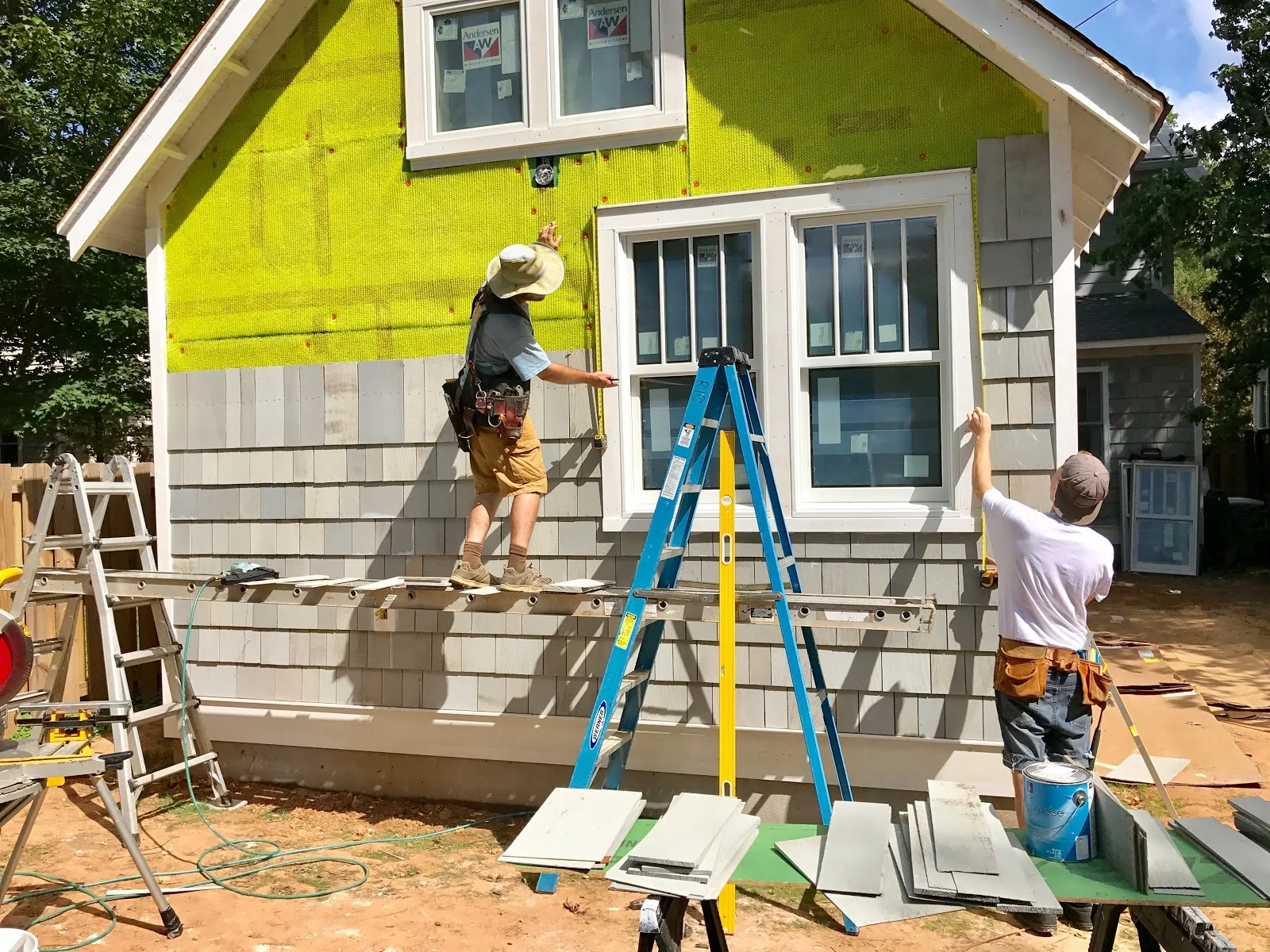Materials Matter: Wood Siding
Is wood siding good or bad? It all depends on how it’s installed.
Spoiler alert: We are happy to install wood siding and materials on our projects, it just has to be done correctly. For us that means priming, breathability, and a little something we call craftsmanship.
There are many options for exterior materials these days and most people gravitate toward “maintenance-free” products like vinyl, PVC or fiber-cement. There’s nothing wrong with these products - we use them in our projects all the time when it’s the right place and client’s preference. Most of these products are really just trying to mimic the look of real wood while also being rot resistant. This means less replacement, decay, repairs, etc. But this doesn’t mean that real wood isn’t a viable option. Sometimes real wood is just the right way to go, and it can be done in a way that requires little maintenance and a long lifetime.
In a recent addition we worked on, the client chose real wood cedar shake for the exterior. There are a variety of vinyl and fiber-cement materials that are made to look like wood shake, but the decision was made to go with the real deal. We were more than happy to accomodate that selection, and we were confident that we could deliver a high quality install that would also be long lasting, following three steps:
Step 1: Breathability
The most important thing for wood siding is for it to be able to breathe. When wood siding gets wet, it absorbs water, unlike vinyl or fiber-cement siding. The wood will then need to dry out completely to avoid rot. The reason people experience rot in their wood siding is likely because it was not able to dry out on ALL sides.
In order to ensure that the shake will be able to dry on the front and on the back, we use a breathability product called Slicker © Classic Rainscreen. This product creates some space between the siding and the exterior wall sheathing so that air can circulate and dry every surface of the cedar shake.
Step 2: Prime all six sides!
Primer is the other key to durability in exterior wood products. Prior to installation, every cedar shake is primed on every surface - top, bottom, front, back, left side, and right side. Our mantra during this step is “prime all six sides!” At this stage, the details really matter, so we also keep a can of spray primer at our cut station. When a board is cut or trimmed, the raw wood side gets another coat of primer. No surface left unprimed.
Step 3: Craftsmanship
At the core of everything we do is expert craftsmanship. Whether we’re siding the exterior of an addition, installing kitchen cabinets or laying hardwood floors - our carpenters are the reason these products look and work beautifully. A quality material can look good by itself, but if installed incorrectly, its beauty will fade - quickly. There is no shortcut, budget saver or alternative option when it comes to good old fashioned craftsmanship. And that’s something we bring to every single job.






